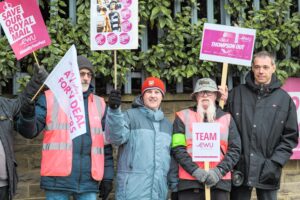British electric plane lights up the skies on its maiden flight

One of the first electric-powered planes to be designed and built entirely in Britain has made its maiden flight in what has been hailed as a “milestone” in the future of air travel.
The single-seat Sherwood eKub took to the skies above Norfolk last month, relying solely on a battery to propel it from the runway.
Several air companies around the world are working on electric planes and have launched prototypes. Only one aircraft, however, the Velis Electro, made by the Slovenian manufacturer Pipistrel, has been certified for use.
Big aircraft makers such as Airbus and Boeing have also invested in electric travel and are looking at how it can be adapted for small personal aircraft or for larger commercial use.
Elon Musk, the world’s richest man and owner of the electric carmaker Tesla, has said he wants to build a supersonic electric jet, while the UK government’s “Accelerating the Electrification of Flight” scheme is funding research into the sector.
Last year, the Spirit of Innovation, an all-electric aircraft built by Rolls-Royce, broke two world speed records after tests at the Ministry of Defence’s Boscombe Down site in Wiltshire.
The Sherwood eKub is now the latest British-built electric aircraft to take to the skies. Developed at Cranfield University in Bedfordshire, the British plane made an initial ten-minute flight followed by a second 22-minute flight from Little Snoring airfield in Norfolk.
Dr Guy Gratton, a test pilot and associate professor of aviation at the university, piloted the aircraft and said that it was “one of the most exciting things I’ve ever done”.
He said: “The aeroplane flew very much as predicted from our analysis and ground tests. This is a new way of flying and we’re at the start of a steep learning curve on electric flight.
“As a test pilot, an aeronautical engineer, and as a researcher, learning all about this new class of aeroplane is one of the most exciting things I’ve ever done.”
Dr Gratton told Flyer, an aviation magazine, that he had reached 2,000ft and separately flown at 80mph during one of two test flights at Little Snoring on April 21.
“Absolutely everything worked, although, inevitably, this was all very ‘initial’ flying, with much expansion and research to be done in the coming months,” he said. “This was a fantastic team effort.”
It has been developed by a consortium of Cranfield University, the Light Aircraft Company, Flylight Airsports and CDO.
He said that electric power “certainly behaves like neither a jet nor a piston engine” and there was less vibration compared with a normal aircraft. He said that he was still learning about the plane and that factors such as temperature could affect how long its battery would last or whether power could drop off quickly at “full throttle”.
He said that in future, pilots would have to take into account battery power when planning flightpaths.
“There are some obvious implications of that to visual flying, such as predictability of flightpath in trying to clear obstacles,” he said.
Paul Hendry Smith, director of the Light Aircraft Company, said: “This is clearly a milestone in electrically powered flight and we are delighted to be at the cutting edge.”




